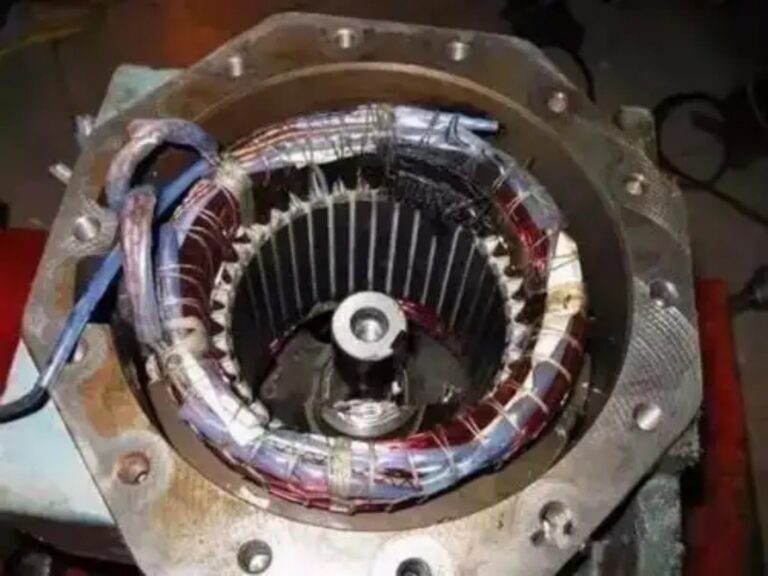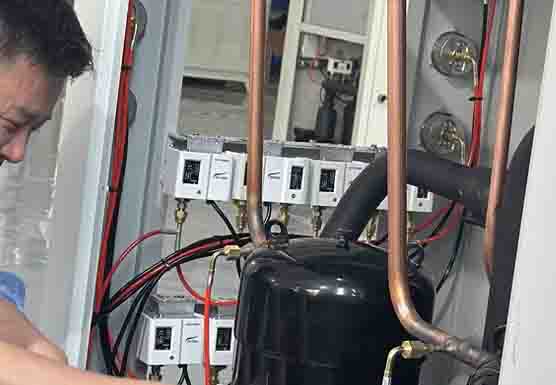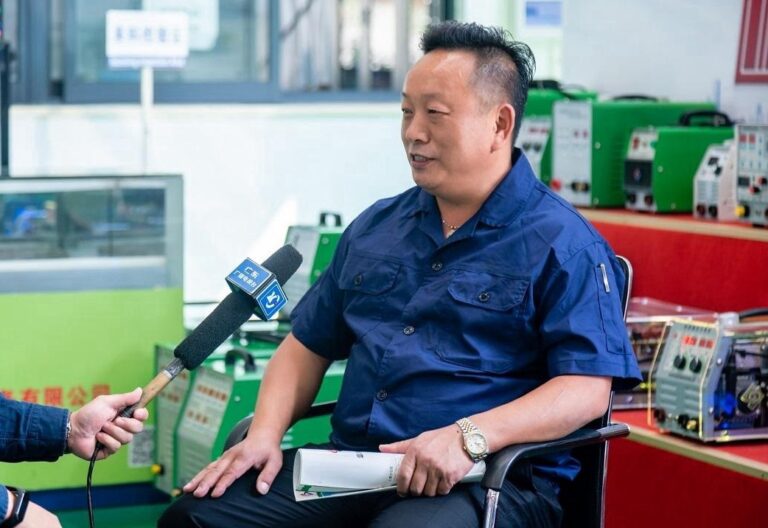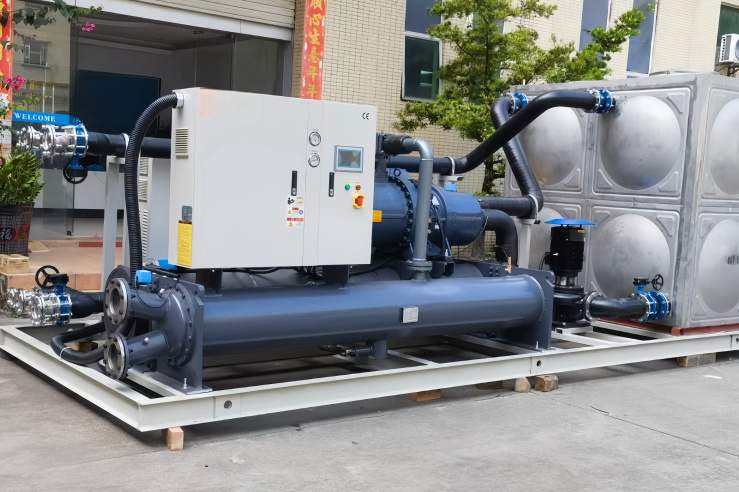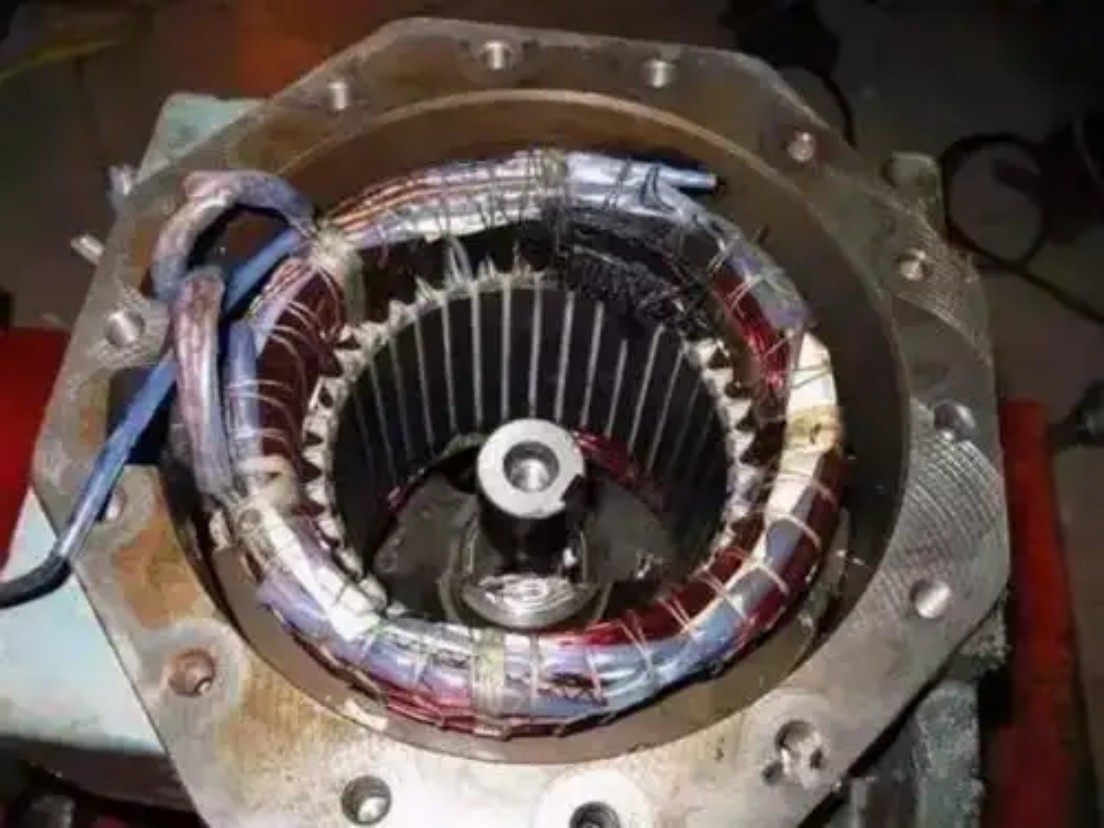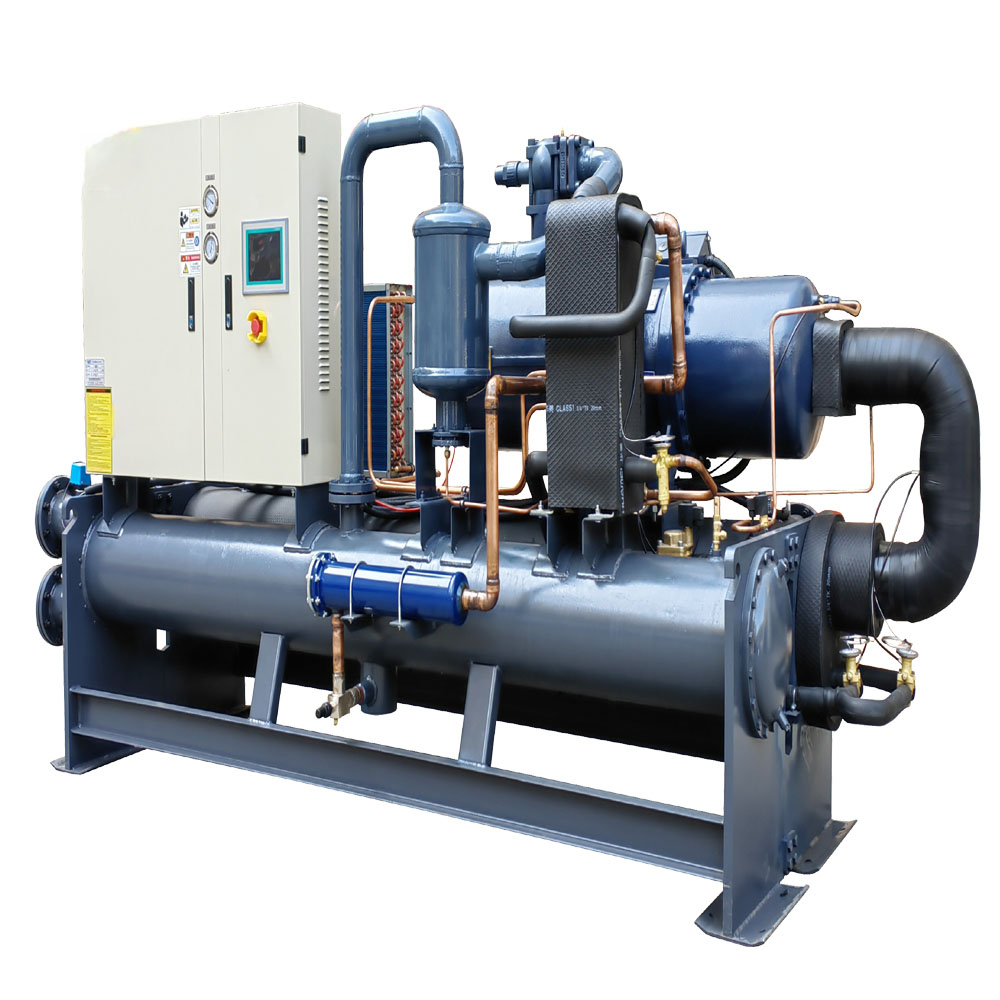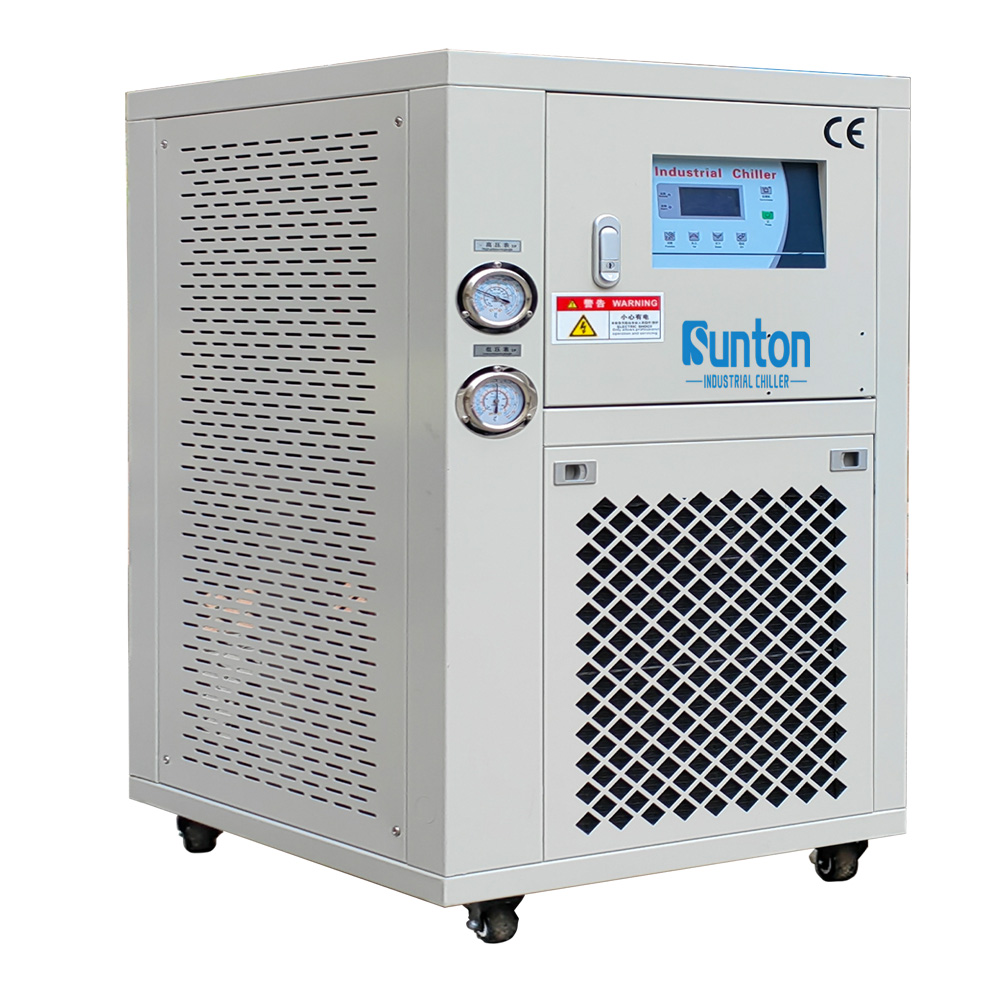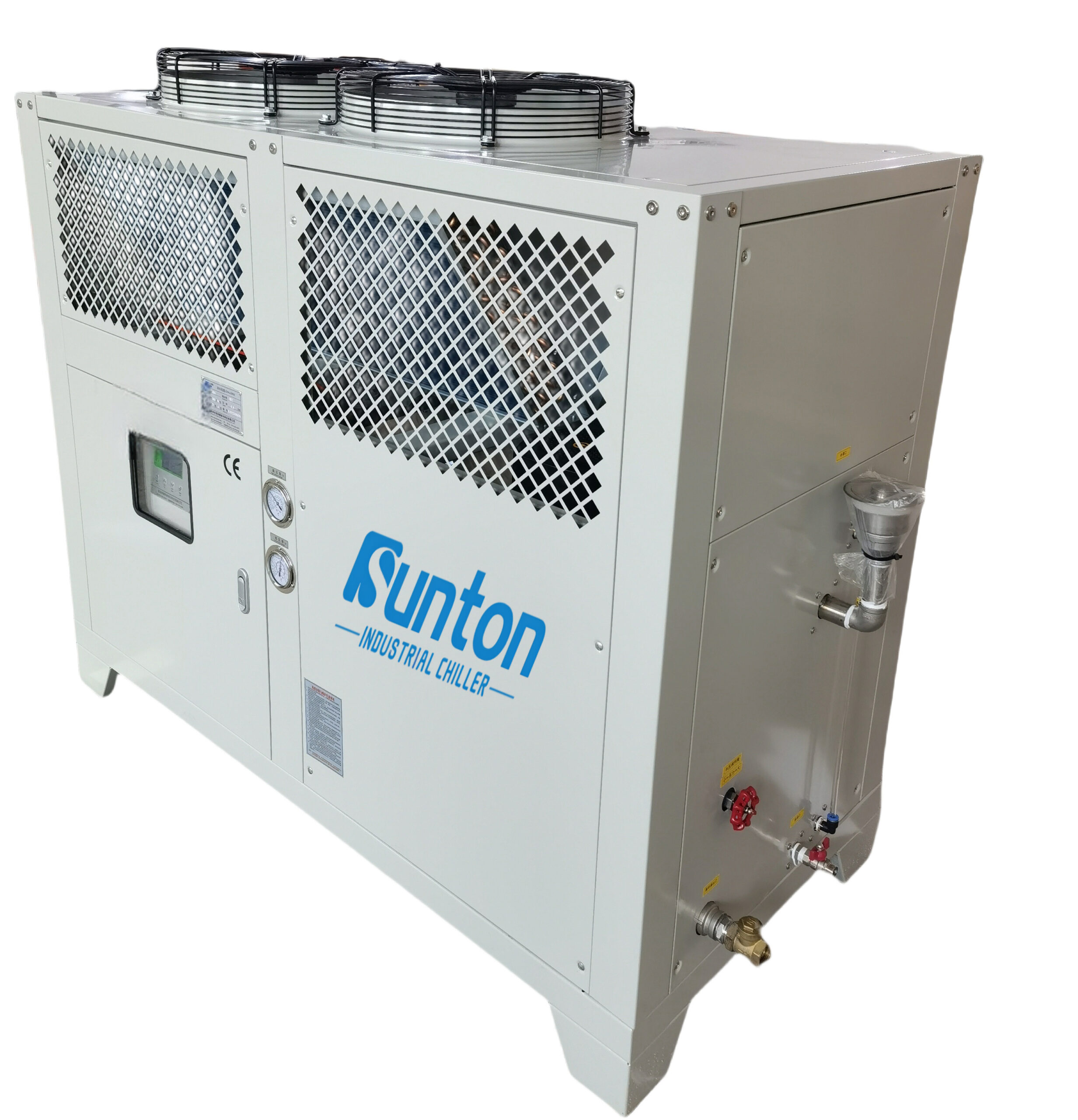-
Dalingshan Industriel Guangdong
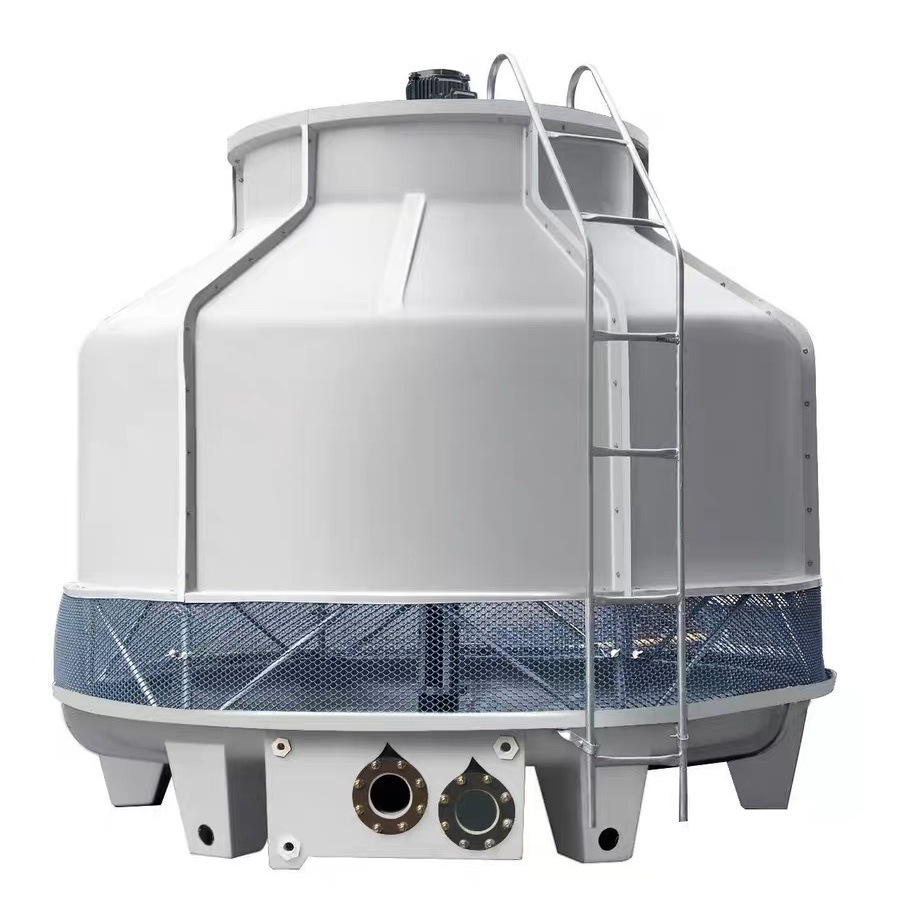
tour de refroidissement vs condenseur évaporatif – types de condenseurs évaporatifs
Démystifier les condenseurs évaporatifs et les tours de refroidissement : un guide complet pour les applications industrielles
Cet article propose une plongée en profondeur dans le monde des condenseurs évaporatifs et des tours de refroidissement, en expliquant leurs différences, leurs fonctionnalités et leurs applications. Que vous travailliez dans l'industrie des plastiques, que vous gériez un centre de données ou que vous supervisiez une usine de transformation alimentaire, la compréhension de ces systèmes de refroidissement est essentielle pour des opérations efficaces et rentables. Nous explorerons le fonctionnement de ces systèmes, leurs avantages et pourquoi le choix du bon peut avoir un impact significatif sur vos processus industriels. En tant qu'usine de fabrication de refroidisseurs d'eau industriels, nous comprenons les subtilités de ces systèmes et sommes là pour vous guider dans leur sélection et leur mise en œuvre, ce qui fait de cet article une lecture incontournable pour toute personne impliquée dans les solutions de refroidissement industriel.
Table des matières
1. Qu'est-ce qu'un condenseur évaporatif et comment fonctionne-t-il ?
Un condenseur évaporatif est un dispositif utilisé pour éliminer l'excès de chaleur d'un système de refroidissement lorsque la chaleur ne peut pas être utilisée à d'autres fins. Il combine les fonctionnalités d'un condenseur refroidi par eau et d'une tour de refroidissement en une seule unité. Ce type de condenseur est généralement utilisé dans les grands systèmes de réfrigération et de climatisation où le rejet de chaleur est essentiel. Le but principal d'un condenseur évaporatif est de refroidir le réfrigérant en utilisant le processus d'évaporation.
Dans un condenseur à évaporation, la vapeur chaude du réfrigérant circule dans un serpentin. De l'eau est pulvérisée sur le serpentin et de l'air est simultanément soufflé dessus. Lorsque l'eau s'évapore, elle absorbe la chaleur du réfrigérant, ce qui provoque sa condensation de l'état de vapeur à l'état liquide. La chaleur est ensuite libérée dans l'atmosphère. Ce processus de rejet de chaleur est très efficace, ce qui fait des condenseurs à évaporation un excellent choix pour les applications industrielles. Les condenseurs à évaporation fonctionnent en gérant efficacement le processus de transfert de chaleur, garantissant ainsi que le système fonctionne à des températures optimales. D'après mon expérience, l'efficacité de ce système est inégalée, en particulier dans les environnements industriels.
2. Qu’est-ce qu’une tour de refroidissement et pourquoi est-elle importante ?
Une tour de refroidissement est un échangeur de chaleur spécialisé conçu pour éliminer la chaleur de l'eau utilisée dans les processus industriels. Les tours de refroidissement sont utilisées pour refroidir l'eau qui a absorbé la chaleur de divers processus, tels que la production d'électricité, les systèmes CVC et la fabrication industrielle. Elles sont essentielles pour maintenir l'efficacité et la sécurité de ces opérations en évitant la surchauffe. Elles refroidissent l'eau par un mélange de transfert de chaleur et de masse, principalement par évaporation. L'eau est pulvérisée sur un matériau de remplissage (matériau à grande surface), tandis que l'air est aspiré à l'aide d'un ventilateur, l'eau chaude est refroidie, principalement par évaporation d'une partie de l'eau. L'eau refroidie est ensuite collectée et réutilisée dans le système.
Les tours de refroidissement jouent un rôle essentiel dans de nombreuses industries. Dans l’industrie du plastique et du caoutchouc, par exemple, elles sont essentielles pour refroidir les machines et maintenir la qualité des produits. De même, dans l’industrie agroalimentaire, elles contribuent à la conservation des denrées périssables en maintenant les systèmes de réfrigération à des températures optimales. L’efficacité d’une tour de refroidissement a un impact direct sur la productivité et la rentabilité de ces opérations, en évitant la surchauffe et en garantissant un fonctionnement continu. Mon expérience dans ce secteur m’a appris que les tours de refroidissement sont indispensables pour maintenir l’efficacité opérationnelle.
3. Types de condenseurs évaporatifs : lequel vous convient le mieux ?
Il existe principalement deux types de condenseurs évaporatifs : à tirage forcé et à tirage induit. La principale différence réside dans le positionnement et le fonctionnement du ventilateur qui déplace l'air à travers le serpentin.
Condenseurs évaporatifs à tirage forcé Les unités à tirage forcé sont équipées d'un ventilateur situé au bas de l'appareil, qui pousse l'air à travers le serpentin. Cette conception est généralement plus compacte et peut supporter des pressions statiques plus élevées. Cependant, elles peuvent être plus bruyantes et consommer plus d'énergie que les unités à tirage induit. Les unités à tirage forcé sont souvent utilisées dans les applications où l'espace est limité. Ce sont les principaux types de condenseurs utilisés dans un Refroidisseurs CVC système.
Condenseurs évaporatifs à tirage induit Les unités à tirage induit sont équipées d'un ventilateur situé au sommet de l'unité, qui aspire l'air à travers le serpentin. Cette conception offre généralement une meilleure efficacité énergétique et un fonctionnement plus silencieux. Les unités à tirage induit conviennent aux applications de plus grande taille et offrent une meilleure dissipation de la chaleur. Les facteurs à prendre en compte lors du choix entre ces deux types comprennent la disponibilité de l'espace, les exigences en matière d'efficacité énergétique et les restrictions de bruit. Chaque type a ses avantages et le meilleur choix dépend des besoins spécifiques de votre application.
4. Comment fonctionne le processus de refroidissement par évaporation ?
Le refroidissement par évaporation est un processus naturel qui utilise l'évaporation de l'eau pour refroidir l'air. Dans le contexte des condenseurs évaporatifs et des tours de refroidissement, ce processus est exploité pour éliminer la chaleur d'un système. Lorsque l'eau s'évapore, elle absorbe une quantité importante de chaleur de l'air ambiant, ce qui entraîne une baisse de température. C'est pourquoi le refroidissement par évaporation est une méthode si efficace pour rejeter la chaleur.
Dans les condenseurs à évaporation comme dans les tours de refroidissement, l'eau est pulvérisée sur un échangeur de chaleur ou un matériau de remplissage, et l'air passe à travers. Lorsque l'eau s'évapore, elle refroidit l'eau restante et l'air. L'eau refroidie est ensuite remise en circulation dans le système, tandis que l'air chargé de chaleur est expulsé dans l'atmosphère. Ce cycle continu garantit que le système de refroidissement fonctionne efficacement, en maintenant la température souhaitée. Le processus de refroidissement par évaporation est à la fois simple et ingénieux.
5. Tours de refroidissement et condenseurs évaporatifs : principales différences expliquées
Bien que les tours de refroidissement et les condenseurs évaporatifs utilisent tous deux l'évaporation pour refroidir, ils remplissent des fonctions différentes au sein d'un système de refroidissement. Il est essentiel de comprendre la différence entre une tour de refroidissement et un condenseur évaporatif pour sélectionner l'équipement adapté à vos besoins.
Une tour de refroidissement est principalement utilisée pour refroidir l'eau, qui est ensuite utilisée comme liquide de refroidissement dans divers processus industriels. L'eau absorbe la chaleur du processus et est ensuite refroidie dans la tour par évaporation. Un condenseur à évaporation, en revanche, est utilisé pour refroidir le fluide frigorigène directement dans un système de climatisation ou de réfrigération. Il combine les fonctions d'un condenseur et d'une tour de refroidissement, ce qui en fait une solution plus intégrée pour le rejet de chaleur. Le choix entre les deux dépend de la nécessité de refroidir de l'eau ou de refroidir directement un fluide frigorigène.
Voici un tableau résumant les principales différences :
| Fonctionnalité | Tour de refroidissement | Condenseur évaporatif |
| Fonction principale | Refroidit l'eau | Refroidit le réfrigérant |
| Intégration | Unité séparée | Combine les fonctions de condenseur et de tour de refroidissement |
| Application | Procédés industriels, CVC | Systèmes de réfrigération et de climatisation |
| Moyen de transfert de chaleur | Eau | Réfrigérant |
| Efficacité énergétique | Généralement plus bas | Généralement plus élevé |
| Entretien | Plus simple et moins cher | Plus complexe, potentiellement plus coûteux |
| Besoin d'espace | Empreinte plus grande | Empreinte plus petite |
| Coût initial | Inférieur | Plus haut |
| Coût opérationnel | Plus élevé en raison du traitement et du pompage de l'eau | Inférieur en raison de la fonction combinée |
| Niveau de bruit | Peut varier, généralement modéré | Peut varier, généralement modéré |
| Consommation d'eau | Plus élevé en raison de l'évaporation et de la purge | Utilisation de l'eau plus faible et plus efficace |
| Impact environnemental | Modéré, selon le traitement de l'eau | Consommation d'énergie plus faible et plus efficace |
| Complexité du système | Système plus simple | Système plus complexe |
| Capacité de rejet de chaleur | Variable, dépend de la taille et de la conception | Élevé, optimisé pour le refroidissement direct par réfrigérant |
Cette comparaison devrait aider à clarifier les rôles et les avantages distincts de chaque système.
6. Quelles sont les principales applications des tours de refroidissement et des condenseurs évaporatifs ?
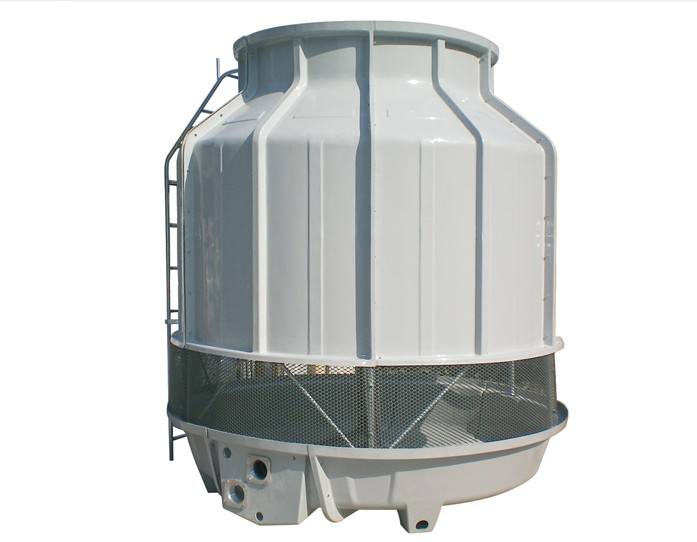
Les tours de refroidissement et les condenseurs évaporatifs sont utilisés dans de nombreux secteurs industriels. On les trouve généralement dans les centrales électriques, les usines de traitement chimique et les grands systèmes CVC. Elles sont essentielles pour refroidir l'eau utilisée dans divers processus industriels, garantissant que les équipements fonctionnent dans des limites de température sûres.
Les condenseurs évaporatifs sont généralement utilisés dans les grands systèmes de réfrigération et de climatisation. Ils sont particulièrement utiles dans des applications telles que les systèmes de réfrigération pour le stockage à froid, la transformation des aliments et les grands bâtiments commerciaux. Leur capacité à refroidir efficacement le réfrigérant en fait un choix privilégié dans ces environnements. La polyvalence de ces systèmes les rend indispensables dans de nombreux contextes industriels. Par exemple, un Refroidisseurs au glycol Le système peut grandement bénéficier de l’intégration d’un condenseur évaporatif.
Voici quelques industries et leurs utilisations spécifiques :
- Industrie des plastiques et du caoutchouc: Moules et machines de refroidissement.
- Industrie de l'usinage: Fluides et équipements de coupe de refroidissement.
- Industrie agroalimentaire:Entretien des systèmes de réfrigération pour les denrées périssables.
- Industrie chimique et pharmaceutique:Refroidissement des réacteurs et autres équipements de traitement.
- Industrie électronique:Dissiper la chaleur des processus de fabrication.
- Industrie du laser:Refroidissement des systèmes laser.
- Industrie de l'imprimerie:Contrôle de la température dans les processus d'impression.
- Industrie médicale:Refroidissement des équipements médicaux tels que les machines IRM.
- Laboratoires et instituts de recherche:Maintenir des températures stables pour les expériences.
- Centres de données:Refroidissement des serveurs et autres équipements informatiques.
7. Comment choisir entre un condenseur évaporatif et une tour de refroidissement ?
Le choix entre un condenseur évaporatif et une tour de refroidissement dépend de plusieurs facteurs. Tout d'abord, tenez compte du liquide de refroidissement principal du système de refroidissement. Si vous devez refroidir l'eau qui sera utilisée comme liquide de refroidissement, une tour de refroidissement est le choix approprié. Si vous devez refroidir directement le réfrigérant, un condenseur évaporatif est plus adapté.
Un autre facteur à prendre en compte est l’ampleur et la complexité de vos besoins en refroidissement. Pour les processus industriels à grande échelle, les tours de refroidissement sont souvent plus pratiques en raison de leur capacité à gérer de grands volumes d’eau. Pour les systèmes de réfrigération intégrés, les condenseurs évaporatifs offrent une efficacité supérieure et un encombrement réduit. En outre, tenez compte de facteurs tels que l’efficacité énergétique, les exigences de maintenance et les coûts d’investissement initiaux.
| Considération | Tour de refroidissement | Condenseur évaporatif |
| Liquide de refroidissement | Eau | Réfrigérant |
| Échelle | Grands procédés industriels | Systèmes de réfrigération intégrés |
| Efficacité énergétique | Inférieur | Plus haut |
| Entretien | Plus simple et moins cher | Plus complexe, coût plus élevé |
| Investissement initial | Inférieur | Plus haut |
| Besoin d'espace | Plus grand | Plus petit |
| Complexité du système | Plus simple | Plus complexe |
| Application | Refroidissement général de l'eau | Refroidissement direct du réfrigérant |
| Coût d'exploitation | Plus élevé en raison du traitement de l'eau | Inférieur en raison des fonctions combinées |
| Impact environnemental | Modéré, lié au traitement de l'eau | Utilisation d'énergie plus faible et plus efficace |
| Niveau de bruit | Généralement modéré | Généralement modéré |
Prendre une décision éclairée nécessite une évaluation approfondie de vos besoins et contraintes spécifiques.
8. Pourquoi les condenseurs évaporatifs et les tours de refroidissement sont-ils essentiels dans les processus industriels ?
Les condenseurs évaporatifs et les tours de refroidissement sont essentiels pour maintenir l'efficacité et la sécurité des processus industriels. Ils jouent un rôle crucial dans l'évacuation de la chaleur, empêchant la surchauffe des équipements et garantissant un fonctionnement continu. Sans ces systèmes, de nombreux processus industriels ne pourraient pas fonctionner efficacement, ce qui entraînerait une baisse de la productivité et des risques potentiels pour la sécurité.
Dans les secteurs tels que la production d’énergie et le traitement chimique, les tours de refroidissement sont essentielles pour dissiper l’excès de chaleur généré pendant les opérations. De même, dans l’industrie agroalimentaire, les condenseurs évaporatifs aident à maintenir les basses températures nécessaires à la réfrigération et à la conservation. La fiabilité et les performances de ces systèmes de refroidissement ont un impact direct sur le succès global de ces opérations. C’est pourquoi il est important d’investir dans des systèmes de refroidissement de haute qualité. Refroidisseurs centraux à vis refroidis par eau est une décision qui peut avoir un impact significatif sur l’efficacité opérationnelle à long terme.
9. Rentabilité des condenseurs évaporatifs et des tours de refroidissement
Les condenseurs évaporatifs et les tours de refroidissement permettent de réaliser des économies importantes par rapport aux autres méthodes de refroidissement. Le refroidissement par évaporation est intrinsèquement économe en énergie, car il s'appuie sur le processus naturel d'évaporation pour éliminer la chaleur. Il en résulte une consommation d'énergie plus faible et des coûts d'exploitation réduits.
Les condenseurs évaporatifs, en particulier, offrent une efficacité supérieure en raison de leur conception intégrée. En combinant les fonctions d'un condenseur et d'une tour de refroidissement, ils éliminent le besoin d'unités séparées, réduisant ainsi à la fois l'investissement initial et les coûts de maintenance continue. Les tours de refroidissement, bien que nécessitant plus de maintenance en raison du traitement de l'eau et du pompage, restent une solution rentable pour les besoins de refroidissement à grande échelle.
Voici une répartition des facteurs de coût :
| Facteur de coût | Tour de refroidissement | Condenseur évaporatif |
| Investissement initial | Inférieur | Plus haut |
| Consommation d'énergie | Plus haut | Inférieur |
| Entretien | Plus bas, mais nécessite un traitement régulier | Composants plus élevés et plus complexes |
| Coûts d'exploitation | Plus élevé en raison de la consommation d'eau et d'énergie | Plus bas en raison d'une efficacité supérieure |
| Utilisation de l'eau | Plus haut | Gestion de l'eau plus faible et plus efficace |
| Coûts de remplacement | Inférieur | Plus haut |
| Efficacité du système | Globalement inférieur | Globalement plus élevé |
| Épargne à long terme | Modéré | Significatif en raison de l'efficacité énergétique |
Dans l’ensemble, les deux systèmes offrent des avantages substantiels en termes de coûts, ce qui en fait des investissements précieux pour les applications industrielles.
10. Questions fréquemment posées
1. Quelle est la fonction principale d’un condenseur évaporatif ?
Un condenseur évaporatif est principalement utilisé pour refroidir le réfrigérant dans un système de climatisation ou de réfrigération en utilisant le processus d'évaporation pour éliminer la chaleur.
2. En quoi une tour de refroidissement diffère-t-elle d’un condenseur évaporatif ?
Une tour de refroidissement est conçue pour refroidir l'eau utilisée comme liquide de refroidissement dans les processus industriels, tandis qu'un condenseur évaporatif refroidit le réfrigérant directement dans un système de réfrigération.
3. Quels sont les principaux types de condenseurs évaporatifs ?
Les principaux types de condenseurs évaporatifs sont à tirage forcé et à tirage induit, qui se distinguent par l'emplacement et le fonctionnement du ventilateur.
4. Pourquoi le refroidissement par évaporation est-il considéré comme économe en énergie ?
Le refroidissement par évaporation est économe en énergie car il repose sur le processus naturel d’évaporation, qui nécessite moins d’énergie par rapport aux autres méthodes de refroidissement.
5. Quelles industries utilisent couramment des tours de refroidissement ?
Les tours de refroidissement sont couramment utilisées dans les centrales électriques, les usines de traitement chimique et les grands systèmes CVC. Par exemple, elles sont fréquemment utilisées avec Refroidisseurs industriels pour centrales à béton.
6. Les condenseurs évaporatifs conviennent-ils à tous les types de systèmes de réfrigération ?
Les condenseurs évaporatifs sont particulièrement adaptés aux systèmes de réfrigération et de climatisation à grande échelle où un rejet efficace de la chaleur est crucial.
Résumé
- Les condenseurs évaporatifs et les tours de refroidissement sont essentiels pour des opérations industrielles efficaces et sûres.
- Les condenseurs évaporatifs refroidissent le réfrigérant directement par évaporation, tandis que les tours de refroidissement refroidissent l'eau utilisée comme liquide de refroidissement.
- Les types de condenseurs évaporatifs comprennent le tirage forcé et le tirage induit, chacun avec ses propres avantages.
- Le refroidissement par évaporation est une méthode économe en énergie qui repose sur le processus naturel d’évaporation.
- Le choix entre un condenseur évaporatif et une tour de refroidissement dépend des besoins de refroidissement spécifiques, de l’échelle des opérations et des considérations de coût.
- Les deux systèmes offrent des économies de coûts importantes par rapport aux méthodes de refroidissement alternatives.
- Les industries telles que la production d’énergie, la transformation chimique, l’industrie agroalimentaire et les centres de données dépendent fortement de ces systèmes de refroidissement.
- Un entretien approprié et la sélection du bon système sont essentiels pour des performances et une longévité optimales.
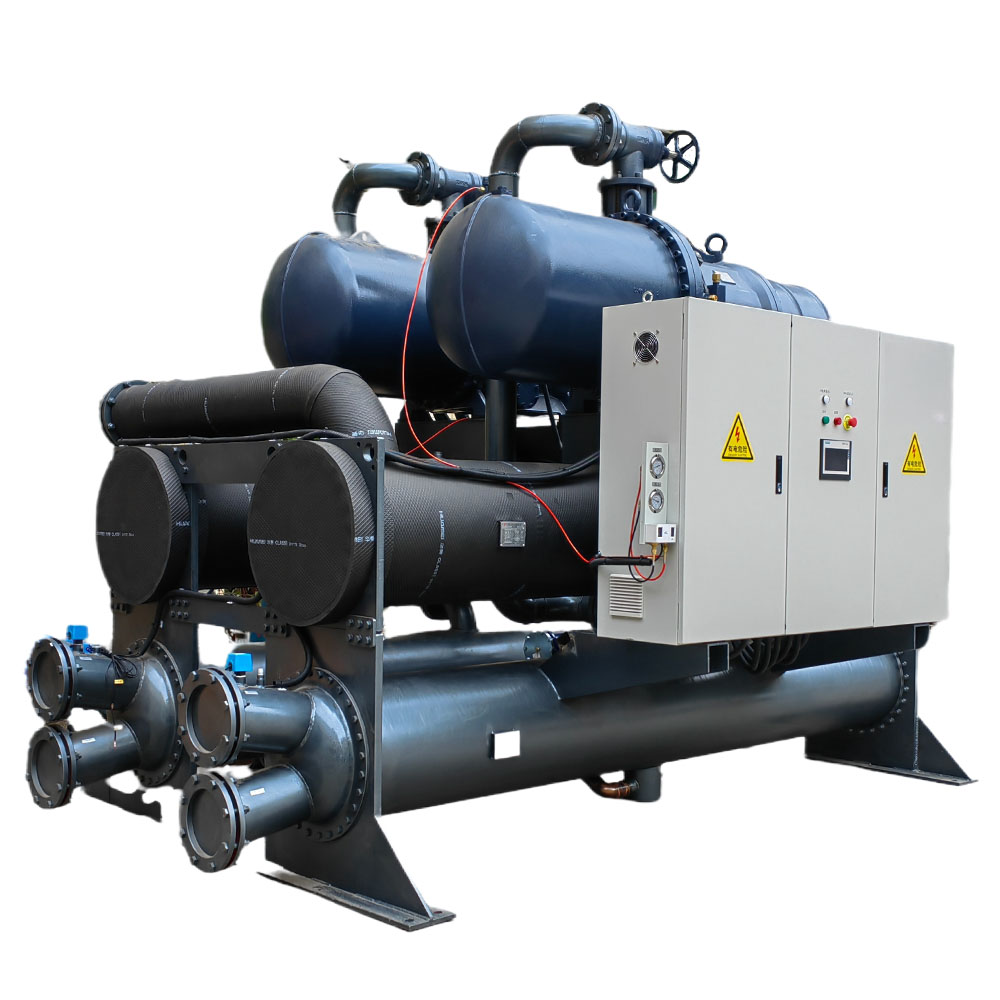
Choisir entre un Refroidisseur d'eau à vis refroidi par eau et un système de refroidissement par air peuvent avoir un impact significatif sur votre efficacité opérationnelle et vos coûts. Il est essentiel de comprendre ces différences. De plus, un Refroidisseur à vis refroidi par air peut être plus adapté à certains environnements où la consommation d'eau est un problème. Il est important de prendre en compte les exigences spécifiques de votre application pour prendre une décision éclairée.

